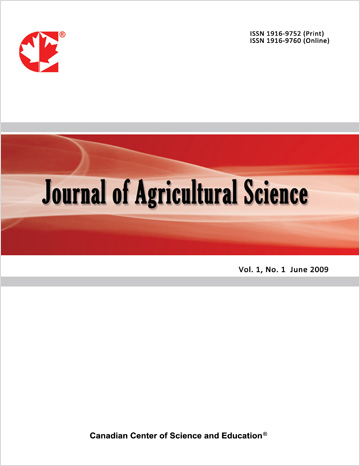Spatial Drivers of Crop Diversification in Andhra Pradesh, India
- K. Nirmal Ravi Kumar
- Srinivasa Konduru
- Swamikannu Nedumaran
- Adinan Bahahudeen Shafiwu
Abstract
The adoption of crop diversification stands as a crucial strategy to counter the challenges posed by climate variability and market fluctuations, playing a pivotal role in enhancing food security, elevating agrarian income, and promoting sustainable farming practices. A detailed examination of crop diversification patterns in Andhra Pradesh unveils a nuanced agricultural landscape, with Prakasam district emerging as a leader in diversification, in contrast to more modest levels in Nellore and East Godavari. Srikakulam displays a moderate level, while Vizianagaram and Visakhapatnam showcase commendable crop diversity. The application of spatial regression model in understanding determinants of Simpson Diversity Index (SDI) in Andhra Pradesh enriches comprehension of the intricate interplay between ecological and spatial factors. In the spatial lag model, significant determinants influencing SDI include temperature, revealing that higher maximum temperatures correlate with reduced ecological diversity. Fertilizer use, particularly phosphorous and potassium, exhibits a positive association with increased SDI. The Gross Area Irrigated (GAI) emerges as a significant contributor, indicating that higher irrigation levels foster greater ecological diversity. Access to long-term loans positively influences crop diversity, empowering farmers to engage in experimental and diversified agricultural practices. Conversely, higher wage rates for both genders negatively impact ecological diversity, potentially due to intensified and specialized farming practices. The negative correlation between the Public Distribution System (PDS) and SDI suggests that areas with PDS procurement exhibit lower crop diversity. Comparing the spatial lag and error models, the former exhibited significant Likelihood Ratio for spatial lag dependence indicating meaningful influence from neighbouring districts, suggesting spatial interdependence—a contrast to the spatial error model. The robust spatial interdependence underscores need for nuanced and targeted policy initiatives. These initiatives should champion and promote diversified agricultural practices, considering the interdependence among neighbouring districts. Such policies would contribute to both resilience and sustainability of agricultural landscape in Andhra Pradesh, reflecting an intricate balance between regional dynamics and broader ecological considerations.
- Full Text:
 PDF
PDF
- DOI:10.5539/jas.v17n11p61
Journal Metrics
- h-index: 67
- i10-index: 839
- WJCI (2023): 0.884
- WJCI Impact Factor (2023): 0.196
Index
- AGRICOLA
- AGRIS
- BASE (Bielefeld Academic Search Engine)
- Berkeley Library
- CAB Abstracts
- ChronosHub
- CiteSeerx
- CNKI Scholar
- Copyright Clearance Center
- CrossRef
- DESY Publication Database
- DTU Library
- e-Library
- EBSCOhost
- EconPapers
- Elektronische Zeitschriftenbibliothek (EZB)
- EuroPub Database
- Excellence in Research for Australia (ERA)
- Google Scholar
- Harvard Library
- IDEAS
- iDiscover
- Jisc Library Hub Discover
- JournalTOCs
- KindCongress
- LIVIVO (ZB MED)
- LOCKSS
- Max Planck Institutes
- Mendeley
- MIAR
- Mir@bel
- NLM Catalog PubMed
- Norwegian Centre for Research Data (NSD)
- Open J-Gate
- OUCI
- PKP Open Archives Harvester
- Polska Bibliografia Naukowa
- Qualis/CAPES
- RefSeek
- RePEc
- ROAD
- ScienceOpen
- Scilit
- SCiNiTO
- Semantic Scholar
- SHERPA/RoMEO
- Southwest-German Union Catalogue
- Standard Periodical Directory
- Stanford Libraries
- SUDOC
- Swisscovery
- Technische Informationsbibliothek (TIB)
- Trove
- UCR Library
- Ulrich's
- UniCat
- Universe Digital Library
- WorldCat
- WRLC Catalog
- Zeitschriften Daten Bank (ZDB)
Contact
- Anne BrownEditorial Assistant
- jas@ccsenet.org
